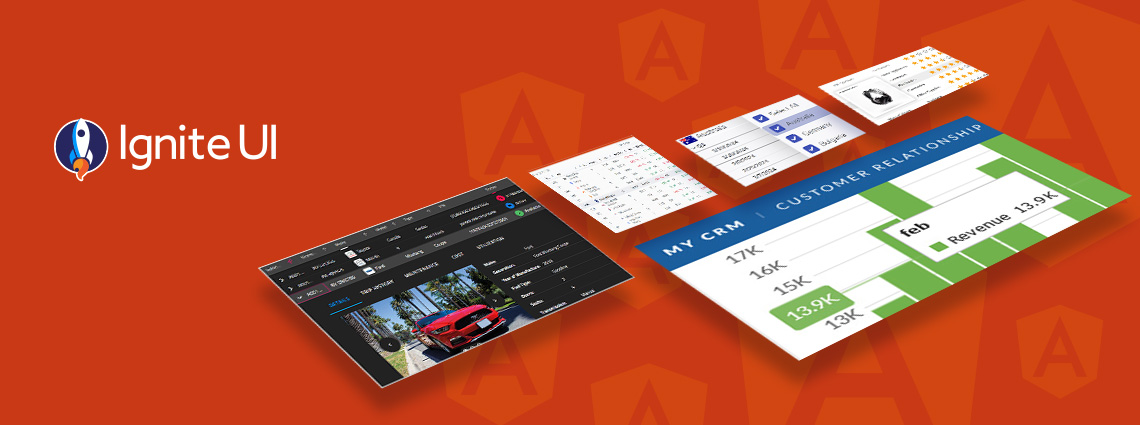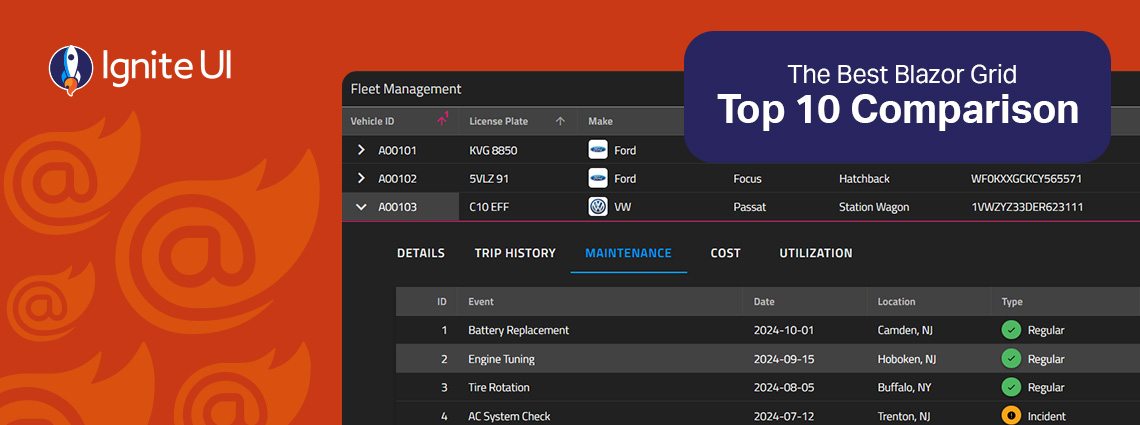
Blazor vs Angular: A Comprehensive Comparison
What should you choose between Blazor vs Angular? Find out the state of Blazor today and how it compares with one of the most popular frameworks, Angular.
Until recently, if you were a C# developer and you wanted to write code for browsers, you pretty much used JavaScript. But the web development world has been changing quickly, and you no longer have to depend on JavaScript for high-end web app development.
What if I told you, then, that you could use Blazor for server-side and client-side app development?In this blog post, I’ll explore what that really means by comparing Blazor with Angular, both top choices for modern developers.
Key Article Takeaways:
- Framework Overview: Blazor utilizes C# within the .NET ecosystem for web applications, while Angular is a mature framework using TypeScript primarily for dynamic single-page applications (SPAs).
- Hosting Models: Blazor offers two models: Blazor Server (with real-time updates via SignalR) and Blazor WebAssembly (client-side execution). Angular focuses on client-side rendering to enhance performance and user experience.
- Performance: Angular generally provides faster initial load times due to its optimized JavaScript approach, whereas Blazor WebAssembly may experience slower loads but offers efficient execution once live.
- Development Experience: Blazor has a gentler learning curve for C# developers, while Angular’s reliance on TypeScript introduces complexity but provides powerful features for building robust applications.
- Use Cases: Blazor is suitable for applications needing both client-side and server-side interactions, while Angular excels in large-scale, high-engagement interfaces.
- Strengths and Weaknesses: Blazor’s familiarity for .NET developers and server-side processing efficiency contrasts with Angular’s established ecosystem and rapid loading, though Angular’s complexity can challenge newcomers.
| Angular | Blazor | |
|---|---|---|
| Production Ready | Angular is production-ready today with years of battle-tested deployments. | With the release of .NET 6 in November of 2021, Blazor has made huge improvements, and can be considered production ready for most applications. |
| Learning Curve | Bigger learning curve when compared to Blazor, especially for .NET / C# developers. | Easy on-ramp for C# and Visual Studio developers. |
| Performance | More tuned for performance as the framework is very mature. | Microsoft continues to tune Blazor performance, .NET 6 addressed many of the issues from prior releases. |
| PWA (Progressive Web App) Support | Yes | Yes (Blazor Web Assembly) |
| Requires an active connection per client | No | Yes (Blazor Server) |
| Stores the component state server-side for each client | No | Yes (Blazor Server) |
| Scoped styles for components | Yes | Yes |
| Bundle Size | < 50KB (Ivy with gZip) | Minimal for Blazor Server. As low as 393kb, up to 780kb for .NET Framework in a Client-side WASM app. |
| Tooling | CLI plus many 3rd party options. | CLI, Visual Studio and 3rd party options. |
| Optimized for SEO / Crawlers | Angular server-side rendering. | Yes |
| Shipping Cadence | 2 major releases per year, which is a lot for enterprises to keep up with. | 1 major release per year with .NET, with minor updates throughout the year. |
| Code Style | Very verbose, lots of boilerplate to get started. | Optimized for less boilerplate, easy to get started. |
Is The Blazor Hype Still Relevant?
A couple of years ago, Blazor was one of the most talked-about technologies in the .NET ecosystem. It promised a bold vision: full-stack web development with C#, eliminating the need for JavaScript entirely. The idea of running .NET code directly in the browser using WebAssembly sparked excitement among developers, especially those already invested in the Microsoft stack.
The situation is a bit different now and Stamen Stoychev, Product Development Manager at Infragistics, has an interesting observation. According to him:
“What is the situation in 2025? While the initial buzz around Blazor has certainly died down, it’s still growing its audience, albeit more slowly and primarily where it was always expected to – enterprises with complex software already on .NET that need an easy way to bring their frontend to the web.
Its primary disadvantage is still holding it back from broader appeal – Blazor WebAssembly’s initial load times are higher due to the need to download the .NET runtime in the browser. This stands in contrast to JavaScript frameworks like Angular, which are typically smaller and can leverage server-side rendering and lazy loading to achieve high-speed performance.”
Blazor is making improvements on that front, so it’s worth keeping an eye on for future reevaluation.
What’s a harder sell, though, is that JavaScript remains by far the most widely used programming language in the world. Asking developers to switch to something entirely different (with little or no gain in productivity) is a tricky proposition for most of today’s web developers.
What Is Blazor?
Blazor is a Microsoft ASP.NET Core web framework that allows developers to write code for browsers in C#. Blazor is based on existing web technologies like HTML and CSS but then allows the developer to use C# and Razor syntax instead of JavaScript. Razor is a popular template markup syntax for .NET. Blazor (Browser + Razor) enables developers to build interactive and reusable web UI for client-side applications written in .NET and implemented under WebAssembly. With both client and server code written in C#, it allows you to share code and libraries, providing a platform to enable the development of vibrant, contemporary single-page applications (SPA) while using .NET end-to-end.
The biggest highlight with Blazor is that it leverages the latest web standards and does not need additional plugins or add-ons to run in different deployment models, either a client-side WebAssembly option and a server-side ASP.NET Core option.
Understanding WebAssembly
WebAssembly, often abbreviated Wasm, is a new standard that can be run in modern web browsers, bringing language diversity to the web platform. Wasm is a low-level assembly-like language featuring a compact binary format that makes it possible to run code written in multiple languages, such as C/C++, Java, and Rust, on the web with near-native performance.
The goal of WebAssembly is to facilitate high-performance applications on web pages. However, its format is designed for execution and integration in other environments and can also run alongside JavaScript.
Features of Blazor
- Build Web UIs with C# instead of JavaScript or TypeScript
- Build progressive web apps (PWAs)
- Create and use reusable Blazor components written in C#
- Full debugging support on the server-side and debugging with some limitations on the client-side
- Data binding with the HTML DOM (limited two-way binding)
- Share code between client and server in C#
- Server and client-side models
- Server-side rendering (aka pre-rendering) for higher performance
- Ahead of time compilation
- Scoped styles
- WebSocket connections
- Works offline (client-side WebAssembly only)
- Works in all modern web browsers, including mobile browsers
- Blazor code has the same security sandbox as JavaScript
- Use JavaScript interop to call JavaScript frameworks and libraries
- Open source

What Is Angular?
Angular, the successor of AngularJS, was created by Google to allow frontend developers to interact with both frontend and backend at the same time. Because Angular is JavaScript-based, there are a lot of resources to work with.
Angular has been around for over a decade, while Blazor has been in the market for only a few years. Angular is a production-ready framework with full support for MVC/MVVM applications, and many large companies are using it. Blazor, while being used by some large brands, is early in its lifecycle.
If you go through Reddit, you will notice some polar opinions, but generally, I can summarize these factors:
- If you’re a C# dev, Blazor is preferred for productivity, consistency, and reduced context switching
- For broader compatibility and community, Angular and React still lead, but come with more moving parts
- Blazor Server is more mature/stable, while Blazor WASM is catching up but still heavy
- A few devs use Blazor + React or Blazor + JS interop together, depending on needs
Angular and Blazor both support progressive web apps (PWAs), though Blazor server-side is not capable of being deployed as a PWA, only the WASM-based Blazor client-side. Both Angular and Blazor are supported in major IDE’s, with full debugging support, as well as additional tooling for developer productivity.
Angular stands out in terms of popularity and ecosystem:
- Nearly 80K stars and 20K+ forks on GitHub
- Over 275,000 questions on Stack Overflow
- Extensive learning resources: courses, books, blogs, and videos
- Regular Angular-focused tech events globally
- Strong third-party library and tool integration support
Angular can potentially load apps faster by using “ahead-of-time compilation” or AOT. AOT converts your Angular HTML and TypeScript code into efficient JavaScript code during the build phase before the browser downloads and runs that code. Compiling your application during the build process provides a faster rendering in the browser. Blazor also supports AOT, but with client-side WebAssembly, which has a larger initial deployment payload compared to the .NET Framework.
Additional Angular development features include:
- Scoped styles to isolate CSS to specific components
- Modular architecture through Angular elements and modules
- Lazy loading for improved performance
- I18n (Internationalization) support for localization
- Ionic integration for cross-platform mobile development (iOS & Android)
As mentioned briefly, there is a huge repository of open-source packages available for Angular developers, including:
- Ignite UI for Angular
- NgBootstrap
- Angular Google Maps
- NgRx
- NgTranslate
- AngularFire
- NgxTextEditor
- Angular Material
- Ng2 Pdf Viewer and many more

The state of web development is being taken to another level. Software engineers no longer have to rely on the typical frameworks and outdated tools for the solutions they build. Now they have a chance to transform and streamline the way their software comes to life. And here is something interesting.
The last couple of months have been really busy for our technical teams at Infragistics as we were working out ways to enhance our App Builder for Angular apps and make it available for Blazor app development as well. And the App Builder for Blazor and App Builder for Web Components are already out now!
If this is the first time you come across this new tech from Infragistics, here are a few things to help you understand the value and capabilities of the WYSIWYG App Builder:
- A complete design-to-code solution ideal for product managers, designers, and developers.
- The only WYSIWYG drag and drop tool for web apps available on the market.
- Works as a low-code tool generating clean Angular, React, Web Components, and Blazor code.
- Keeps up with the AI evolution, providing App Builder AI functionalities.
- Helps companies design and build complete business apps 80% faster than ever before.
- Eliminates silos, reduces friction, miscommunication, and expensive errors.
So, if you’re looking for Angular Data Grids/Table, you can try out the Infragistics’ Angular Data Grid. It delivers features like quick data binding, cell and row selection, cell and row editing and error validation, column summaries, interactive Outlook-style grouping, Microsoft Excel-style filtering, and virtualized rows and columns. It also features an intuitive API for easy theming and branding. In the latest Angular Grid tutorial, you can quickly learn how to create a full-featured Angular UI Grid from scratch.
Comparing Blazor and Angular
Both Blazor and Angular are open-source web frameworks. Their primary difference is that Angular is based on JavaScript while Blazor leverages C# to develop for the web. Some key differences include:
Should You Choose Blazor or Angular?
Both Blazor and Angular are viable options for your next project. It comes down to a few considerations:
- Are you willing to deal with some bumps in the road with a newer framework like Blazor?
- Are you willing to take the dive and spend the time to learn Angular to get the benefit of a battle-tested framework?
- Are you a C# developer who wants an easier on-ramp to modern web apps?
- Are you a hard-core JavaScript developer who would never even consider using .NET for the web?
Things that make Blazor such an interesting framework:
- You can create web apps with pure C# skills
- You can run .NET in the browser without add-ons and plugins, thanks to a Blazor technology called WebAssembly
- You can cut render times on images
- You get progressive web app development
- Fully enabled server-side debugging
Things that make Angular such a popular framework:
- Ensures effective cross-platform development
- Faster builds and high performance are guaranteed
- Web apps are super lightweight, interactive, and dynamic
- It’s been around for ages and has a massive Angular dev community
- Styling improvements and upgrades to keep it going
We believe that no matter which you choose, there are tradeoffs.
At Infragistics, we support both frameworks. Visit our Ignite UI for Angular and Ignite UI for Blazor pages to learn the details of each.
If you want, you can also read our comparison article on Blazor vs React.
(Last updated: August 12, 2025)

